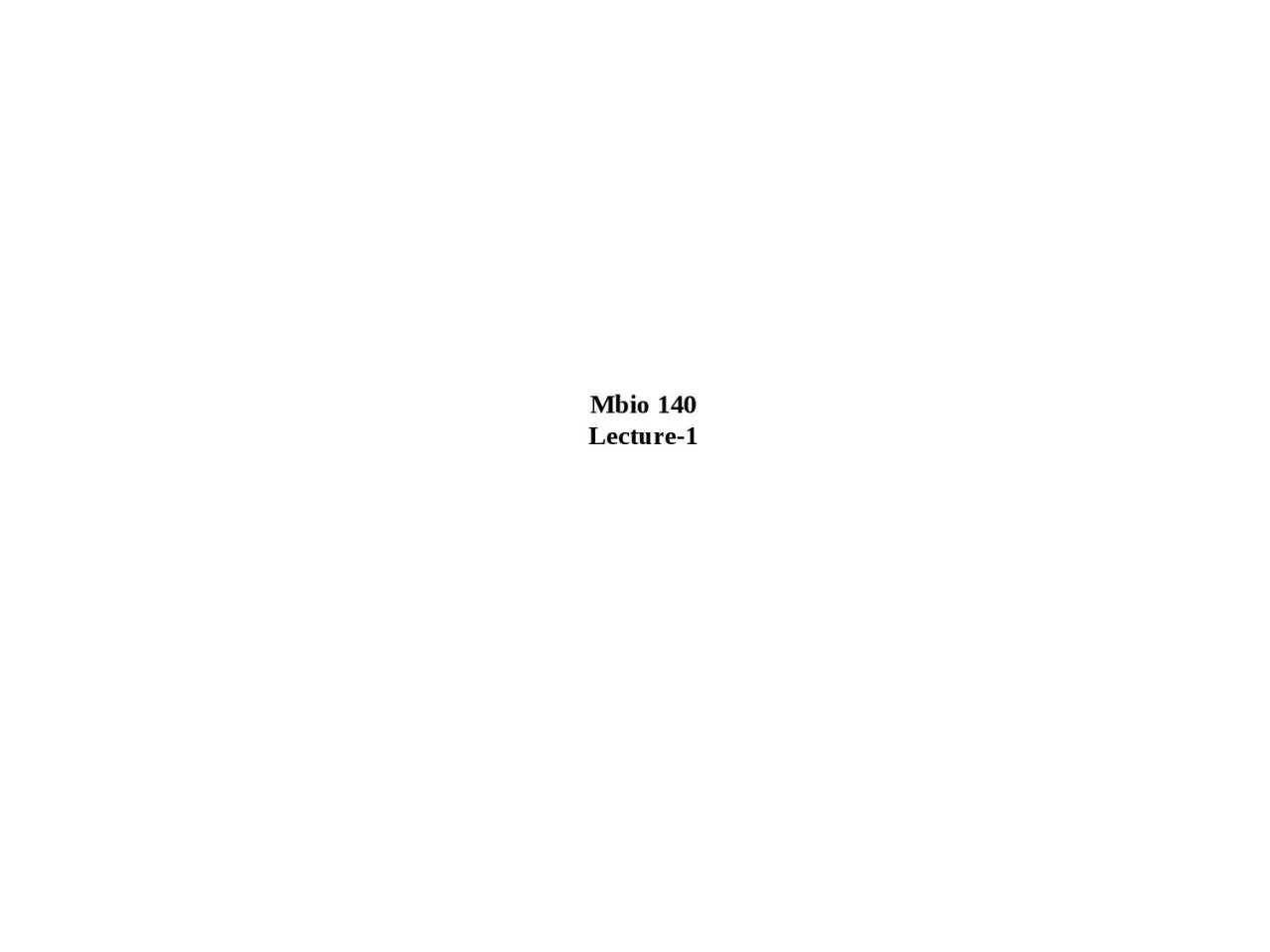

Microbiology derived by Greek mikros small bios life logos science The study of organisms too small to be seen individually with the naked eye during part or all of their life cycle ID: 1025770
Download Presentation The PPT/PDF document "Mbio 140 Lecture-1 Microbiology" is the property of its rightful owner. Permission is granted to download and print the materials on this web site for personal, non-commercial use only, and to display it on your personal computer provided you do not modify the materials and that you retain all copyright notices contained in the materials. By downloading content from our website, you accept the terms of this agreement.
1. Mbio 140Lecture-1
2. MicrobiologyMicrobiology derived by Greekmikros (small) bios (life) logos (science) The study of organisms too small to be seen individually with the naked eye during part or all of their life cycle.This includes bacteria, archaea, viruses, fungi, prions, protozoa and algae, collectively known as 'microbes'. 2
3. MicrobiologyIt has different branches as follows:31.BacteriologyStudy of bacteria2.VirologyStudy of viruses3.ProtozoologyStudy of protozoa4.MycologyStudy of fungi5.Phycology or AlgologyStudy of algae
4. Microorganisms A microorganism or microbe is an organism that is so small that it is microscopic (invisible to the naked eye). Microorganisms are often illustrated using single-celled, or unicellular organisms and viruses, which are microscopic but not cellular.4
5. Importance of Microorganisms5
6. History of MicrobiologyAbu Bakr Al- Razi (250-311 H, 865-923 G). He was the first scientist to differentiate between the "smallpox" and "measles", and presented a detailed description of the two diseases, and symptoms of each.6
7. History of Microbiology Abu al- Qassim Al-Zahrawi (324-400 H, 936-1013 G). An Arabian scientist was known in the medicine field. Wrote in medical encyclopedia and also books on open abscess and treated warts. 7
8. History of Microbiology (Ibn Sina) (368- 424 H , 980-1037 G). His book The Canon of Medicine was one of the best references in medicine and pharmacology know for describing infectious diseases and quarantine them as control procedures. In Pharmacology, he discussed how to effectively test new medicines. 8
9. History of Microbiology9Antony Van Leeuwenhoek (1632 – 1723)Invented the first practical microscopes and used them to become the first person to see and describe bacteria.Descriptions of Protozoa, basic types of bacteria, yeasts and algae.Father of Bacteriology and protozoology.In 1676, he observed and described microorganisms such as bacteria and protozoa as “Animalcules”.
10. The van Leeuwenhoek microscope10
11. History of Microbiology Louis Pasteur, a chemist, scientist, and inventor (1822–1895). “A father of microbiology”. Vaccines development- anthrax, cholera, TB, rabies. Infections caused by germs→ Healthcare awareness for surgeons. Food safety- “Pasteurization”.11
12. History of Microbiology Robert Koch (1843-1910). Discovery of the causative agent Anthrax, Bacillus anthracis. The causative agent of cholera, Vibrio cholerae. The causative agent of tuberculosis, the slow-growing bacterium, Mycobacterium tuberculosis. Developing the technique of growing bacteria (Isolating pure culture on solid media).12
13. History of Microbiology Robert Koch- Four postulates: The organism must always be present, in every case of the disease. The organism must be isolated from a host containing the disease and grown in pure culture. Samples of the organism taken from pure culture must cause the same disease when inoculated into a healthy, susceptible animal in the laboratory. The organism must be isolated from the inoculated animal and must be identified as the same original organism first isolated from the originally diseased host.13
14. 14
15. QUESTIONS??15